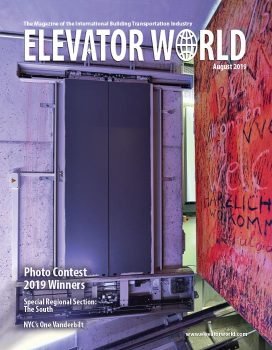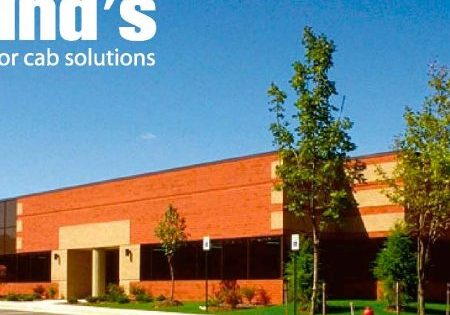A closer look at the information system and the kinds of companies utilizing it
This article was first presented at the 2018 International Elevator & Escalator Symposium in Istanbul. For more information on December 3-4, 2019’s event in Las Vegas and to participate, visit www.elevatorsymposium.org.
In today’s world of business, finding ways to manage information efficiently and effectively can prove challenging for any organization.
Despite that, companies and their managers have sought better ways to improve performance in organizations through better use of improved information systems. The fact remains that evaluating and managing information is still a great challenge for managers today. The question, “What do customers actually need in relation to information systems and what functions are being used?” is still being asked.
Elmualim and Johnson believe that one of the greatest problems with performance is the management of information, and it’s believed that information management systems are “not measured objectively”; feedback given is neither timely nor constructive; and there is no agreement in place on “what good information actually is.”[3]
Bearing this in mind, I decided to look at the issue of computer-aided facility management (CAFM) as an automated facility-management information system. From my years working with one of the international elevator and escalator companies and for the past 15 years as a consultant in the elevator and escalator sector, I am very much aware of the issues, challenges and concerns facing both the service provider and customer in relation to “information value” and “information overload” in the industry.
What Is CAFM?
Abel and Lennerts define CAFM as “a system to support operational and strategic facility management; i.e., all of the activities associated with administrative, technical and infrastructural facility management.”[1] The support takes the form of documentation, provision, filtration and monitoring of such information. The development of CAFM is an upcoming topic in industry and administration. Every organization is faced with hard competition in the market and, therefore, forced to develop efficient structures in facility management. For CAFM systems, data structures and development of these structures are very important.
The possibilities of CAFM systems are multifarious, and the system manufacturers are constantly drawing attention to these. However, the questions still remain: what do customers actually need, and which functions are being used? According to Madritsch and May, despite the multitude of vendors and users in different branches, “there is still a lack of transparent and systematic case studies regarding successful CAFM implementation.”[4] There is still huge uncertainty about the market situation.
Since the late 1990s, CAFM has provided efficient information technology (IT) tools for mapping, evaluation and control of facility management (FM) structures and processes. Although in use for more than 15 years, CAFM is still a relatively new and challenging technological approach, and, thus far, not all projects that use it can be considered a success. Bainbridge and Finch believe “the use of IT in the form of CAFM is more likely amongst dedicated FM service providers than organizations with in‐house FM delivery, and that medium‐sized enterprises, with between 51 and 250 employees, are least likely to be using CAFM.”[2] The cost of implementation of a CAFM system is determined to a greater extent by the scope of functions, existing data, number of workplaces and the fields of application.
Navy believes CAFM systems have three fields of application, though there is little evidence to suggest that these fields are being used:
- Management-oriented applications, which give instruction for the organization, management and provision of information
- Planning-oriented applications, which support planning processes
- Editing-oriented applications, which evaluate planning alternatives.[5]
FM Industry Regulation and Standardization
While we conducted extensive research in relation to regulation or standardization of the use of information, it is evident that there are very few regulations on information, and the only requirement was in relation to FM systems themselves. ISO 41001:2018 specifies the requirements for an FM system when an organization:
- Needs to demonstrate effective and efficient delivery of FM that supports the objectives of the demand organization
- Aims to consistently meet the needs of interested parties and applicable requirements
- Aims to be sustainable in a globally competitive environment
The requirements specified in ISO 41001:2018, however, are non-sector specific and intended to be applicable to all organizations, or parts thereof, whether public or private sector, and regardless of the type, size and nature of the organization or geographical location.
Who Is Adopting CAFM Products?
In our experience, most clients adopting CAFM have multiple facilities spread within a single country or multiple countries. For each facility, it is expected that there are multiple types of equipment that require maintenance, whether this is preventive or reactive maintenance. Such equipment can include air- conditioning and heating units, intruder alarm systems, sprinkler systems, fire alarm systems and, in some cases, elevators and/or escalators.
For facility managers who need to manage multiple remote facilities, it would be difficult to have a clear insight into which type of maintenance is conducted, when it is conducted, and the time spent conducting it.
Which Type of Information Is of Interest to Facility Managers?
The main parameters in which facility managers are interested are the types of maintenance conducted, such as preventive or reactive maintenance; the reason attendance was required for reactive maintenance (whether it was technical, third-party damage or vandalism); reactive maintenance that is contractually covered or not; and the time, materials and cost required to conduct the maintenance.
How Is the Information CAFM Systems Collate Used?
The CAFM system can monitor that preventive maintenance is conducted in accordance with the contract agreement in place. Therefore, it can determine if maintenance visits are conducted at the correct frequency and if the time spent by the maintenance provider reflects the agreed-upon cost.
The systems can monitor reactive maintenance and, ultimately, identify how often systems require it. The systems can identify trends, which can lead to amendments in preventive maintenance frequencies or investment or modernization of equipment.
Over time, the systems will start comparing the performance of similar types of equipment of different makes and show comparisons between the performance of different service providers. This information can then be used for decision and policy makers and will influence the type of equipment they purchase and which service providers to use.
Observations
The facility manager or clients see the benefits of CAFM and are adapting CAFM products into their FM systems. The CAFM industry promises that its software can identify trends and benchmark, but it can also track the time spent and material used by service providers on their equipment. The latest trend in CAFM includes automated payment systems, which check if invoices are uploaded by the service providers on the CAFM systems. This ultimately leads to systems that are only seeking information from service providers and service providers needing to upload or format in accordance with the CAFM systems.
Having used such systems within the industry, we at Shanderry Elevator Escalator Consultants, Ltd. have noted within our organization that the greatest obstacle to overcome is the lack of regulation or standardization across the programs used. While the idea behind CAFM is very good for the customers, it brings the challenges back to the service providers. We must continue to ask whether all the stakeholders within the industry are open to bringing about a standardized, transparent information management system for our industry. If so, we need to decide from where to benchmark the system and how to implement it across multiple stakeholders, countries and legislations.
In an ideal scenario, CAFM systems and service providers’ systems can automatically exchange information digitally, but this requires standardization, which currently does not seem to be available. Until such time that it is, the elevator and escalator industry will have to adhere to client requirements that use CAFM systems, and these systems can be disruptive and cost- prohibitive to service providers.
Benefits of CAFM
- CAFM can be used to achieve transparency of information, direct access to data and improved planning and performance. Data standardization and the elimination of redundant information can be reduced. CAFM can also help facility managers become more proactive, rather than reactive, in the decision-making process.
- CAFM can help improve customer service through automation and interaction. It can help improve processes and information flow.
- CAFM can help reduce costs in the form of reduction on license costs for multiple systems, support costs and the reduction in duplication of service through integrated solutions. Relocation costs can also be reduced through efficient use of space and a continuous improvement in facility-management efficiencies.
- CAFM can benefit the overall legal objectives of the business, in relation to statutory requirements, environmental legislation and compliance.
- CAFM can be used to notify health and safety concerns and policies. This can help reduce the risk of accidents and regulatory compliance violations.
Challenges of CAFM
- There is little detailed information available concerning the scope of use of CAFM systems in practice.
- There is little evidence to suggest that the fields of application of CAFM systems are in use.
- A limiting factor is the continued shrinking of maintenance budgets and resource constraints.
- Collation of data from external sources is concerning.
- The information available is not always in real time or just in time. This time dependency issue is a major problem with any database system, and CAFM is no different.
- Information overload is a big concern.
- CAFM requires huge resources of time and cost for installation, training and data migration from existing systems.
- High initial setup costs are also concerning.
Challenges for the Elevator and Escalator Industry
- The software industry is driving CAFM systems.
- Facility managers and clients alike see the benefit of these systems, which are seen as the tool to make maintenance and its costs transparent.
- Are we at a point in the industry whereby all stakeholders need to collaborate on the idea of information-sharing, transparency and standardization?
- What challenges does the industry face in working with CAFM systems, requested by the customer, within the overall industry to collaborate?
- Like any system, we encounter human error. How do we make provisions for this?
- How does the industry envisage the rollout of such a system — who are the decision-makers to accept the implementation of these systems — front line employees, engineers, administration staff? Who basically has the responsibility to oversee it, given that the systems currently being used are very fragmented and dependent upon the country, manager, etc. involved?
- Multiple systems across multiple geographical locations and customers is another issue, which may be addressed by giving each service provider the responsibility to provide its customers with an efficient and effective information- management system, which could be integrated with existing systems.
References
[1] Abel, J. and Lennerts, K. “Where Does CAFM Really Help?” (2005).
[2] Bainbridge, M. and Finch, E. “Getting the Attention the Facilities Manager Deserves,” Facilities, Vol. 27 Issue 7/8: p. 277-290 (2009).
[3] Elmualim, A. and Johnson, A.P. “Application of Computer-Aided Facilities Management (CAFM) for Intelligent Buildings Operation,” Facilities, Vol. 27 Issue 11/12: p. 421-428 (2009).
[4] Madritsch, T. and May, M. “Successful IT Implementation in Facility Management,” Facilities, Vol. 27 Issue 11/12, pp.429-444 (2009).
[5] Navy, J. Facility Management (2000).
Get more of Elevator World. Sign up for our free e-newsletter.








